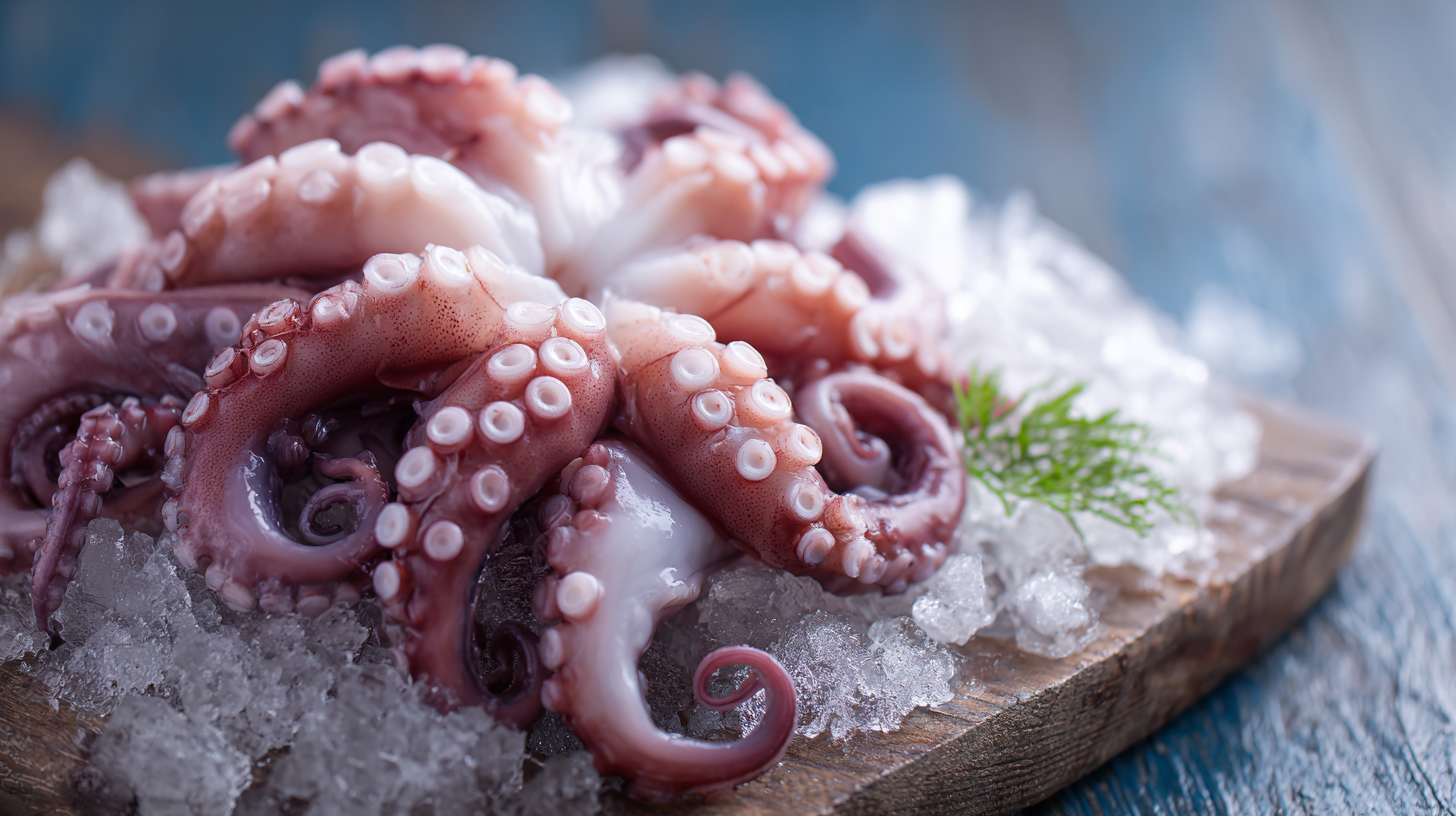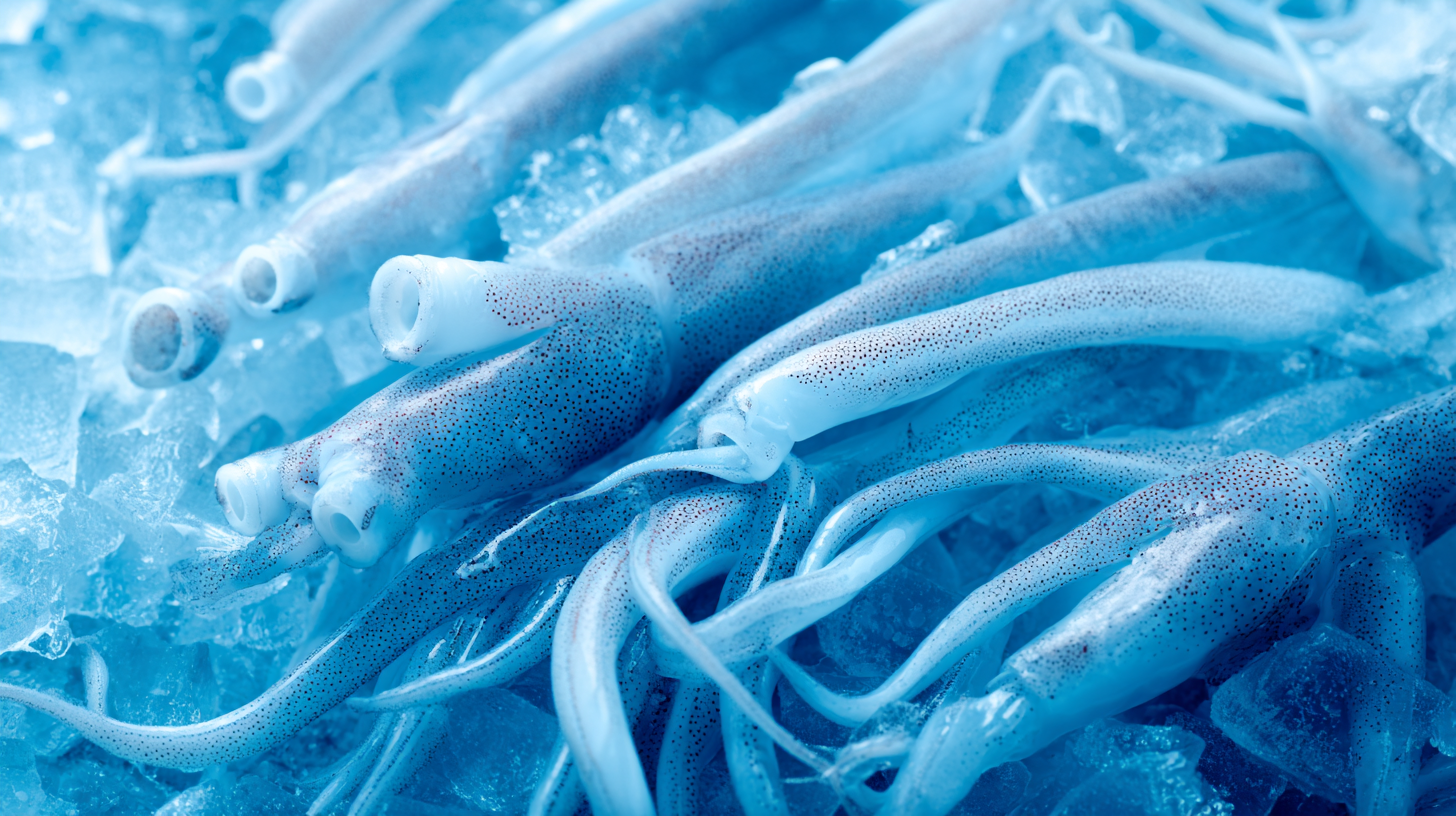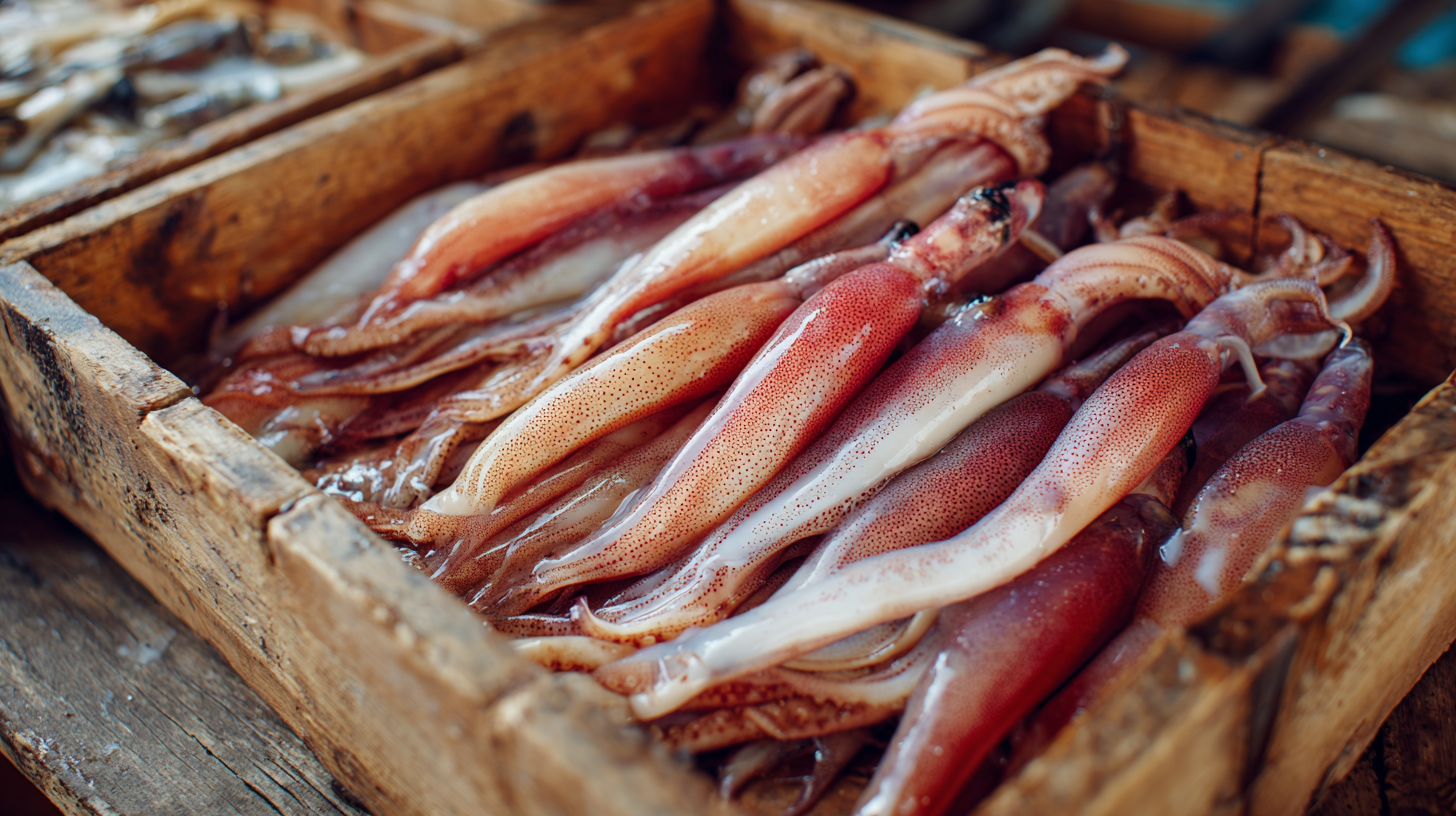The global seafood market is experiencing a significant surge, with frozen seafood, particularly Frozen Squid Tentacles, leading the way due to their versatility and unique textures that enhance various culinary creations. According to a recent report by the Food and Agriculture Organization (FAO), the consumption of squid has expanded by 3.5% annually, largely driven by the rising popularity of Asian cuisines across the world. Chefs and home cooks alike are increasingly seeking high-quality Frozen Squid Tentacles to deliver rich flavors in dishes ranging from stir-fries to seafood pastas.

However, selecting the right type and supplier is crucial to ensure freshness, taste, and sustainability. This blog will explore the unique qualities of the best Frozen Squid Tentacles and offer top strategies for choosing the ideal supplier to elevate your culinary offerings.
 When it comes to frozen squid tentacles, understanding the various types and their distinct features can significantly enhance your culinary experience. Generally, squid tentacles are categorized into species such as Pacific squid, European squid, and Calamari, each offering unique textures and flavors. For instance, Pacific squid tends to be more tender and milder in taste, making it ideal for light dishes, while European squid is firmer and perfect for grilling or frying.
When it comes to frozen squid tentacles, understanding the various types and their distinct features can significantly enhance your culinary experience. Generally, squid tentacles are categorized into species such as Pacific squid, European squid, and Calamari, each offering unique textures and flavors. For instance, Pacific squid tends to be more tender and milder in taste, making it ideal for light dishes, while European squid is firmer and perfect for grilling or frying.
When choosing the right type of frozen squid tentacles for your dishes, consider the preparation method. If you’re aiming for a stir-fry, opt for more tender varieties to ensure they absorb sauces well. Conversely, for grilling, select firmer tentacles that will maintain their shape.
Tips: Always check for packaging integrity; any signs of freezer burn can affect quality. When thawing, do so slowly in the refrigerator to retain moisture, and avoid microwaving, which can alter texture. Finally, remember to taste-test a small portion before incorporating them into your main dish, as this can help you adjust seasonings appropriately.
When it comes to cooking with frozen squid tentacles, understanding the key factors in selecting the right type can elevate your dishes significantly. First, consider the size and weight of the tentacles. Larger tentacles tend to have a meatier texture and can be more visually appealing when plated. However, smaller tentacles are often more tender and can absorb flavors better, making them ideal for soups and stir-fries. Pay attention to the packaging as well; high-quality squid should be vacuum-sealed to retain freshness and avoid freezer burn.
Another critical factor is the source of the squid. Wild-caught squid generally boasts superior flavor and texture compared to farmed options, which may be raised in less optimal conditions. Check for certifications or sourcing tags that indicate sustainable practices. Lastly, be mindful of any added preservatives or colorings; the best frozen squid tentacles should contain minimal additives. By prioritizing these factors, you can ensure that your seafood dishes are not only delicious but also align with your cooking needs and culinary goals.
When it comes to the culinary experience, the choice between fresh and frozen squid tentacles can significantly impact the quality and texture of your dishes. The recent rise in interest for frozen seafood options has been bolstered by advancements in cold chain logistics, which ensure that these products maintain optimal temperatures throughout their supply chain. According to a 2023 report on cold chain logistics in China, the industry provides essential support for maintaining the freshness and quality of frozen products, especially seafood, which is highly sensitive to temperature variations.
In culinary practice, many chefs argue that properly frozen squid tentacles can retain the essential flavors and textures necessary for a variety of recipes, from stir-fried dishes to gourmet plating. Studies have indicated that the freezing process, when executed correctly, allows squid tentacles to preserve their firm texture and succulent flavor. However, it's important to note that the texture of fresh squid, characterized by its tender and slightly chewy consistency, may still offer a preferable option for some traditional dishes. As the market evolves and consumers become more discerning, understanding the unique characteristics of both fresh and frozen variants is essential for making informed choices in the kitchen.
When it comes to cooking frozen squid tentacles, understanding the best methods can significantly enhance your dishes. The primary cooking techniques for squid include boiling, grilling, frying, and baking. Each method offers distinctive textures and flavors. According to a report from the International Journal of Gastronomy and Food Science, boiling squid in seasoned water for just a few minutes preserves its tender nature, making it ideal for salads and light appetizers.
On the other hand, grilling enhances the flavor profile by introducing a smoky char, while frying creates a delightful crunchy texture. A study published in the Journal of Food Processing & Preservation highlights that frying squid tentacles at high temperatures for a short duration prevents them from becoming rubbery, resulting in a crispy exterior and a moist interior. Lastly, baking is a healthier option, allowing for the infusion of herbs and spices, which can elevate the dish without subjecting the squid to excessive oil. Depending on the desired outcome, selecting the appropriate cooking method is crucial for maximizing the unique qualities of frozen squid tentacles.

When it comes to frozen squid tentacles, not all varieties are created equal. Each type boasts distinct flavor profiles that can elevate a dish in unique ways. For instance, the popular Japanese ika or Pacific squid tentacles are known for their mild sweetness and firm texture, making them ideal for grilling or sashimi. In contrast, Mediterranean varieties, such as those from the North Atlantic, deliver a deeper umami flavor that pairs beautifully in rich pasta dishes and stews. According to industry reports, the global demand for squid has increased by nearly 15% in the past five years, highlighting the growing appreciation for these versatile ingredients.
When selecting the right squid tentacles, consider their origin and freshness. Fresh-frozen varieties typically retain superior quality, as freezing shortly after being caught preserves their natural flavors and textures. Always check for signs of quality: tentacles should have a bright, glossy appearance and should not have any off-putting odors. Remember, larger tentacles can provide a heartier bite, while smaller ones are often more tender.
**Tips:** When cooking, it’s beneficial to lightly marinate squid tentacles with olive oil and citrus to enhance their natural flavors. Additionally, quick cooking methods such as grilling or stir-frying will help maintain their tenderness—overcooking can lead to a rubbery texture. Experimenting with different frozen squid types can lead to delightful culinary discoveries!
| Variety | Flavor Profile | Texture | Best Cooking Methods | Recommended Dishes |
|---|---|---|---|---|
| Japanese Giant Squid | Mild, slightly sweet flavor | Tender yet firm | Grilling, Sautéing | Sushi, Tempura |
| European Squid | Rich, natural seafood flavor | Slightly chewy | Frying, Stewing | Calamari, Pasta dishes |
| Hawaiian Squid | Sweet and briny taste | Soft with a tender bite | Poaching, Grilling | Poke bowls, Salads |
| Baby Squid | Delicate, sweet flavor | Tender and juicy | Quick frying, Grilling | Tacos, Stir-fries |
